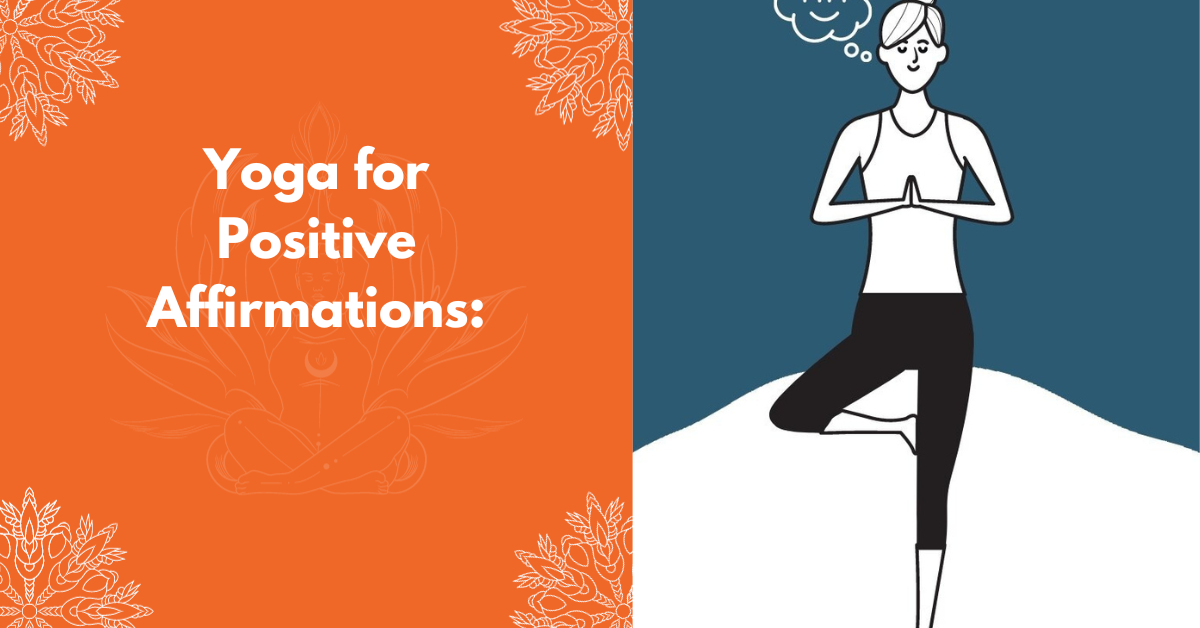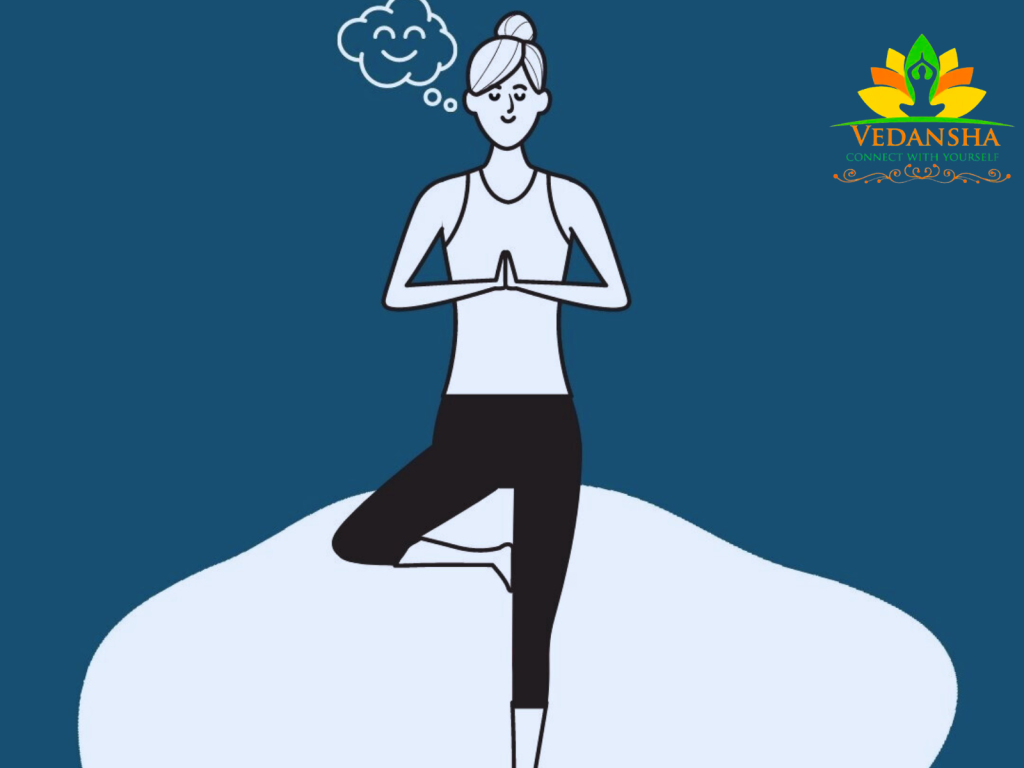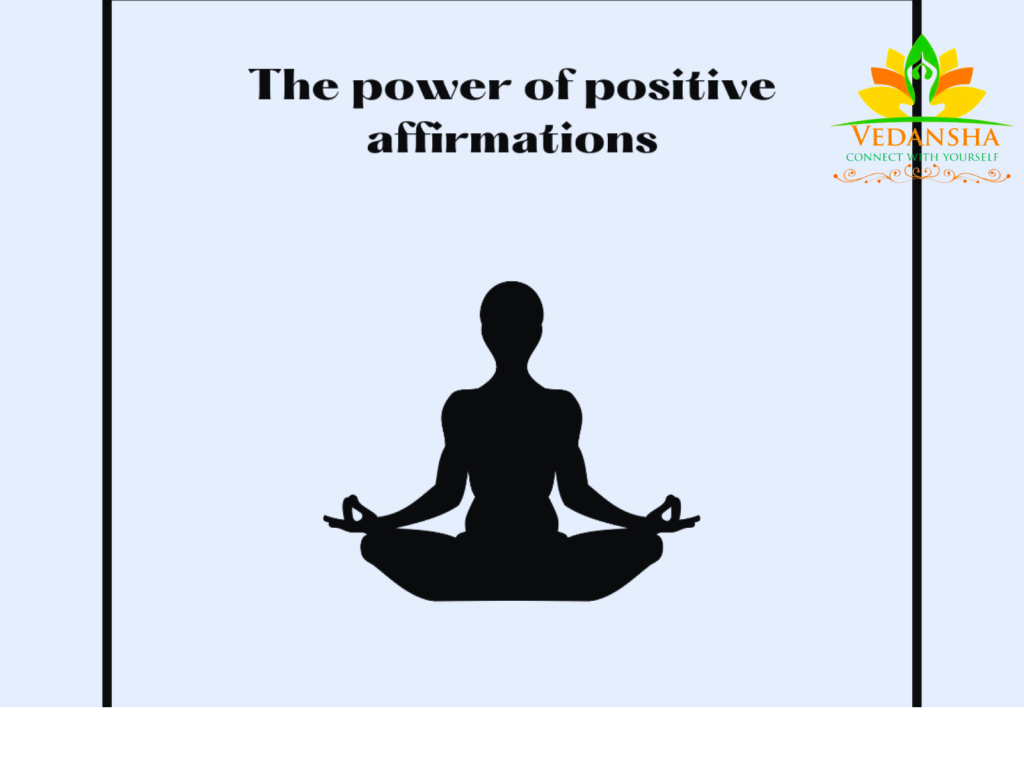
Yoga for Positive Affirmations: A Path to Inner Peace and Self-Confidence
“Transform your mindset with Yoga for Positive Affirmations! 🧘♀️ Boost confidence and inner peace today. Discover how!”
In today’s fast-paced world, filled with stress and negativity, it’s crucial to find ways to cultivate positivity, self-confidence, and inner peace. Yoga, an ancient practice that combines physical postures, breath control, and mindfulness, offers a powerful tool to achieve these goals.
Understanding Positive Affirmations
Positive affirmations are short, powerful statements that are used to challenge and overcome self-sabotaging and negative thoughts. They are designed to shift your mindset from a place of self-doubt to one of self-belief and positivity. When practiced consistently, positive affirmations can rewire your thought patterns, increase self-esteem, and enhance your overall mental health.
The Role of Yoga in Enhancing Positive Affirmations

Yoga and positive affirmations go hand in hand. The physical and mental aspects of Yoga can create an ideal environment for the practice of positive affirmations. Here’s how Yoga complements affirmations:
1. Mind-Body Connection
Yoga encourages a strong mind-body connection. Through various asanas (postures) and pranayama (breath control), you learn to be present in the moment, tuning into your body’s sensations and your breath. This heightened awareness sets the stage for effective affirmation practice.
2. Stress Reduction
Yoga is renowned for its stress-reducing benefits. Chronic stress often leads to negative thinking patterns and self-doubt. Regular Yoga practice can help manage stress levels, making it easier to adopt and believe in positive affirmations.
3. Inner Calm and Clarity
Yoga enhances inner calm and clarity of thought. In the tranquil state achieved through meditation and mindfulness practices, it becomes easier to focus on and internalize positive affirmations.
4. Increased Self-Awareness
As you delve deeper into your Yoga practice, you gain a better understanding of yourself. This self-awareness is crucial for identifying areas where positive affirmations can make the most impact in your life.

Best Yoga Exercises for Positive Affirmations
To harness the power of Yoga for positive affirmations, you can incorporate the following asanas into your practice. Remember to start slowly and consult with a qualified Yoga instructor if you’re a beginner.
1. Mountain Pose (Tadasana)
Technique:
- Stand with your feet hip-width apart, arms by your sides, and palms facing forward.
- Close your eyes and take deep breaths, focusing on your affirmation.
- Feel rooted to the ground and visualize yourself as a strong mountain.
Benefits:
- Posture Improvement: Tadasana is excellent for correcting poor posture habits. By aligning your spine and shoulders, it promotes an upright and graceful posture.
- Balance Enhancement: This pose enhances your sense of balance, as you stand on one solid foundation. It helps improve proprioception, which is your body’s awareness of its position in space.
- Strengthens Leg Muscles: Tadasana engages your leg muscles, including the thighs, calves, and ankles, helping to build strength and stability.
- Mind-Body Connection: Practicing Mountain Pose encourages a strong mind-body connection. You become more aware of your body’s alignment and the sensations in each part of your body.
- Stress Reduction: Tadasana can be a meditative pose. It promotes a sense of calm and helps alleviate stress by focusing on breath and inner stillness.
- Increased Height: Over time, regular practice may help improve your height as you consciously lengthen your spine.
- .

2. Warrior Pose (Virabhadrasana)
Technique:
- Step one foot back, keeping it at a 45-degree angle.
- Bend your front knee at a 90-degree angle while keeping your back leg straight.
- Raise your arms overhead, palms facing each other.
- Repeat with the other leg.
Benefits:
- Benefits of Virabhadrasana I:
- Strengthens Leg Muscles: This pose builds strength in your quadriceps, hamstrings, and calf muscles.
- Improves Balance: Virabhadrasana enhances your balance and stability, both physically and mentally.
- Boosts Confidence: Practicing the warrior pose instills a sense of confidence and courage, helping you face challenges head-on.
- Opens the Chest and Lungs: The raised arms in this pose open up the chest, improving lung capacity and promoting deep breathing.
- Enhances Concentration: Gazing forward in Virabhadrasana helps improve focus and concentration.
- Energizes the Body: The pose increases blood circulation, providing an energizing effect.
3. Child’s Pose (Balasana)
Technique:
- Kneel on the floor and sit on your heels.
- Lower your torso forward, bringing your forehead to the mat and arms stretched out.
- Breathe deeply and relax in this pose.
Benefits:
- Strengthens Leg Muscles: This pose builds strength in your quadriceps, hamstrings, and calf muscles.
- Improves Balance: Virabhadrasana enhances your balance and stability, both physically and mentally.
- Boosts Confidence: Practicing the warrior pose instills a sense of confidence and courage, helping you face challenges head-on.
- Opens the Chest and Lungs: The raised arms in this pose open up the chest, improving lung capacity and promoting deep breathing.
- Enhances Concentration: Gazing forward in Virabhadrasana helps improve focus and concentration.
- Energizes the Body: The pose increases blood circulation, providing an energizing effect.

4. Cobra Pose (Bhujangasana)
Technique:
- Lie face-down on the mat, hands placed under your shoulders.
- Inhale and lift your chest off the ground while keeping your pelvis and legs down.
- Hold for a few breaths, looking up.
Benefits:
- Strengthens the Back: Cobra Pose strengthens the muscles of the back, particularly the lower back, and can help alleviate back pain.
- Improves Posture: Practicing this asana helps correct and maintain proper posture by opening the chest and shoulders.
- Increases Flexibility: It enhances spinal flexibility, making it an excellent pose for those who spend long hours sitting.
- Opens the Heart: Bhujangasana stretches the chest and promotes a sense of openness and vulnerability, both physically and emotionally.
- Stimulates Organs: It stimulates the abdominal organs, aiding in digestion and detoxification.
- Elevates Mood: The gentle backbend can help elevate your mood and reduce stress.
5. Tree Pose (Vrikshasana)
Technique:
- Stand on one leg, bending the other knee and placing the sole of your foot against your inner thigh or calf.
- Balance and place your hands in a prayer position in front of your chest.
- Focus on your breath and affirmation.
Benefits:
- Improves Balance: Tree Pose enhances your sense of balance and stability, both physically and mentally.
- Strengthens Leg Muscles: It strengthens the muscles in your standing leg, including the calves, thighs, and ankles.
- Promotes Concentration: The need for focused attention in this pose enhances concentration and mental clarity.
- Enhances Posture: Regular practice of Vrikshasana improves posture by aligning the spine and shoulders.
- Calms the Mind: The meditative aspect of the pose brings a sense of tranquility and calm to the mind.
- Encourages Mindfulness: Practicing mindfulness while balancing helps you stay present and centered.

Tips and Precautions
As you embark on your journey of combining Yoga with positive affirmations, it’s essential to keep these tips and precautions in mind:
Tips:
- Consistency is Key: Practice both Yoga and positive affirmations regularly to experience the most significant benefits.
- Create a Peaceful Space: Find a quiet, peaceful environment for your practice to minimize distractions and enhance your concentration.
- Choose Affirmations Wisely: Craft affirmations that resonate with you personally. They should be in the present tense and positive. For example, “I am confident and capable.”
- Believe in Your Affirmations: Embrace your affirmations with conviction and trust in their power to transform your mindset.
Precautions:
- Physical Limitations: Be mindful of any physical limitations or injuries. Modify poses as needed and consult with a healthcare professional or Yoga instructor if you have concerns.
- Mental Health: If you have a history of severe anxiety, depression, or other mental health issues, consult a mental health professional before beginning any new practice.
- Listen to Your Body: Pay attention to your body’s signals during Yoga. Don’t push yourself too hard, and honor your body’s limitations.
- Balanced Diet: Maintain a balanced diet to support your overall well-being. A healthy diet complements your Yoga practice and positive affirmations.
Diet Plan for Enhancing Positivity
A nourishing diet plays a vital role in supporting your physical and mental health. Here’s a sample diet plan for your morning, lunch, and evening meals:
Morning:
- Warm Lemon Water: Start your day with a glass of warm lemon water to boost digestion and detoxify your body.
- Oatmeal with Berries: A bowl of oatmeal topped with fresh berries provides sustained energy and antioxidants.
Lunch:
- Grilled Chicken or Tofu Salad: A protein-rich salad with plenty of leafy greens, vegetables, and a light dressing.
- Brown Rice: A small portion of brown rice for complex carbohydrates and fiber.
- Fruit: A piece of fruit for a natural sugar boost.
Evening:
- Vegetable Stir-fry: Load up on colorful vegetables stir-fried with tofu or lean protein.
- Quinoa: A serving of quinoa for protein and essential amino acids.
- Herbal Tea: Wind down with a soothing herbal tea like chamomile or lavender.
Snacks (optional):
- Nuts: A handful of unsalted nuts for healthy fats and protein.
- Greek Yogurt with Honey: A small serving of Greek yogurt with a drizzle of honey for a protein
-packed snack.
Foods to Avoid
While cultivating positivity through Yoga and positive affirmations, it’s wise to limit or avoid certain foods that can negatively impact your mood and energy levels:
- Processed Foods: Highly processed foods, such as sugary snacks, fast food, and sugary beverages, can lead to mood swings and energy crashes.
- Excessive Caffeine: Consuming too much caffeine can exacerbate anxiety and disrupt sleep patterns. Limit your caffeine intake, especially in the afternoon and evening.
- Alcohol: Excessive alcohol consumption can affect your mental well-being. Practice moderation and be mindful of how alcohol affects your mood.
- Artificial Sweeteners: Some artificial sweeteners have been linked to mood disturbances. Opt for natural sweeteners when needed.
Conclusion
Combining Yoga with positive affirmations is a holistic approach to achieving inner peace, self-confidence, and a positive mindset. Yoga provides the physical and mental foundation, while positive affirmations reshape your thought patterns. With dedication and consistency, this powerful combination can transform your life.
Remember to practice Yoga with mindfulness, choose affirmations that resonate with you, and nourish your body with a balanced diet. By following these principles and taking precautions where necessary, you can embark on a journey of self-discovery, positivity, and improved mental well-being.
Frequently Asked Questions (FAQs)
1. Can I practice Yoga for positive affirmations as a beginner?
Absolutely! Yoga is suitable for practitioners of all levels. Start with basic poses and gradually incorporate affirmations into your practice.
2. How long should I practice positive affirmations during my Yoga session?
There’s no set duration. You can integrate affirmations at any point during your practice. Some practitioners prefer to start or end their sessions with affirmations, while others incorporate them throughout.
3. Can Yoga and affirmations help with anxiety and depression?
Yes, they can be beneficial. However, if you have a history of severe anxiety or depression, it’s essential to consult with a mental health professional alongside your Yoga practice.
4. Are there specific affirmations for different goals?
Yes, affirmations can be tailored to your specific goals. Whether it’s boosting self-confidence, reducing stress, or improving focus, there are affirmations designed for various purposes.
5. How can I make positive affirmations a habit?
Consistency is key to forming a habit. Set aside dedicated time each day for your affirmations, and gradually they will become an integral part of your routine.

